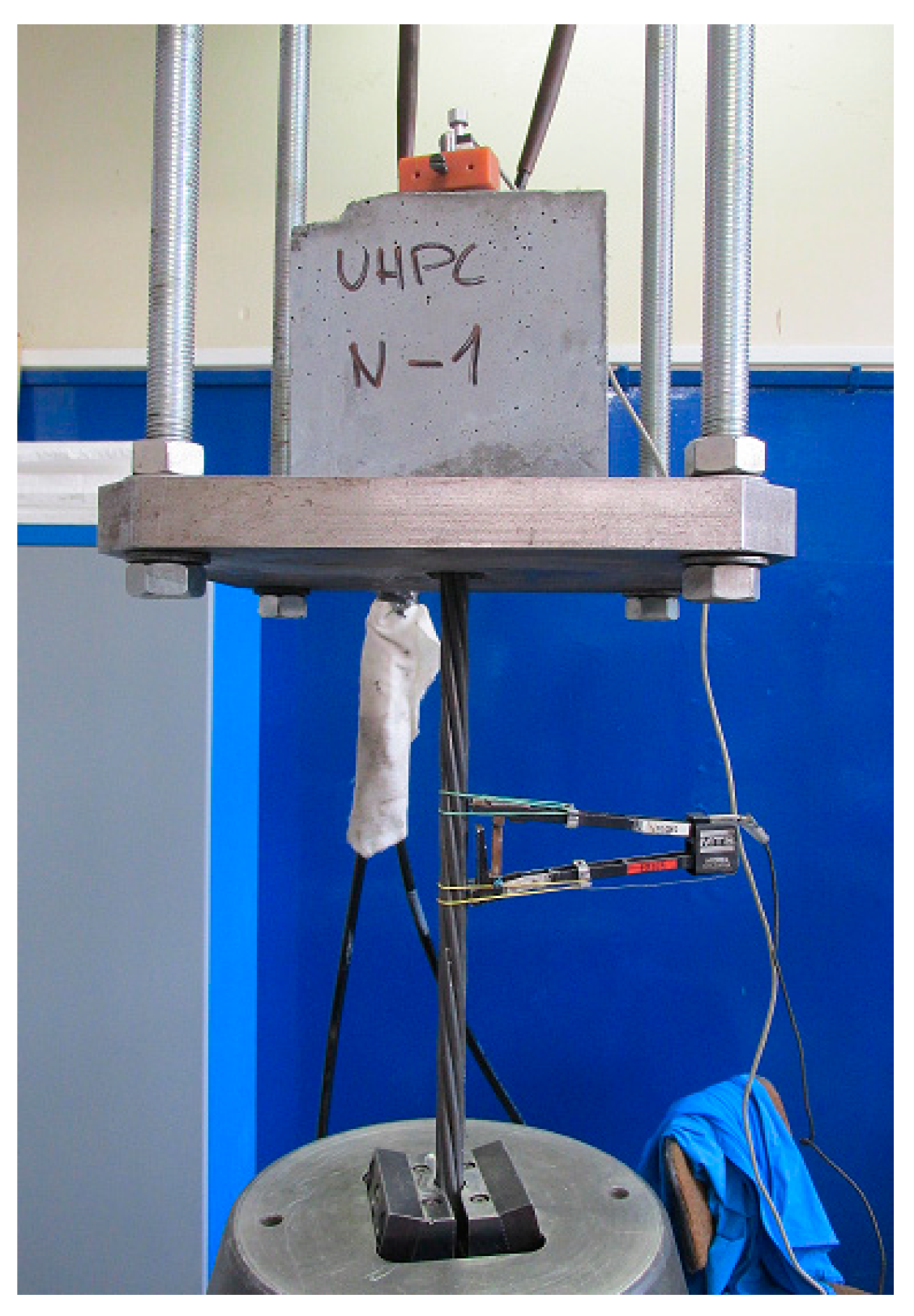Effect of Elevated Temperature on the Bond Strength of Prestressing Reinforcement in UHPC
Abstract
1. Introduction
2. Materials and Methods
3. Results and Discussion
3.1. Compressive Strength
3.2. Bond Strength
3.3. X-ray Powder Diffraction
3.4. Mercury Intrusion Porosimetry (MIP)
3.5. Image Analysis by Confocal Microscopy
3.6. Scanning Electron Microscopy (SEM)
4. Conclusions
- Increasing the temperature up to 200 °C does not reduce significantly either the bond strength between prestressing reinforcement and UHPC, or the compressive strength of UHPC. This is why both variables, in this range of temperatures, are positively affected by the thermal increase of the reactivity of silica fume in the UHPC mixture.
- However, the bond and compressive strengths notably decrease with increasing temperature above 200 °C. As the presented results indicate that the rate of decrease is similar for both the bond and compressive strengths, it might be possible to estimate the decrease in bond on the basis of the observed decrease of compressive strength.
- More specifically, for temperatures between 200 and 800 °C, the bond strength is reduced by 20% (400 °C), 45% (600 °C), and up to 70% at 800 °C.
- The main factor leading to the observed reduction of the bond strength is the increasing porosity of UHPC—a small increase of porosity (e.g., the increase of 0.5% at 400 °C compared to the reference temperature) leads to a significant decrease of the bond (20%).
- The most significant increase of porosity is recorded between 400 °C and 600 °C (almost 2%), which is attributed to the formation of pores with a larger diameter.
- Changes of the phase composition of UHPC have a significant effect on the porosity only at higher temperatures (>600 °C).
- Exposure to 800 °C leads to the highest porosity increase, which is also caused by cracking in the UHPC matrix and the deterioration of the brass-coated fibers.
Author Contributions
Funding
Conflicts of Interest
References
- Shi, C.; Wu, Z.; Xiao, J.; Wang, D.; Huang, Z.; Fang, Z. A review on ultra high performance concrete: Part I. Raw materials and mixture design. Constr. Build. Mater. 2015, 101, 741–751. [Google Scholar] [CrossRef]
- Richard, P.; Cheyrezy, M. Composition of reactive powder concretes. Cem. Concr. Res. 1995, 25, 1501–1511. [Google Scholar] [CrossRef]
- Wang, D.; Shi, C.; Wu, Z.; Xiao, J.; Huang, Z.; Fang, Z. A review on ultra high performance concrete: Part II. Hydratation, microstructure and properties. Constr. Build. Mater. 2015, 96, 368–377. [Google Scholar] [CrossRef]
- Tam, C.M.; Tam, V.W.Y.; Ng, K.M. Assessing drying shrinkage and water permeability of reactive powder concrete produced in Hong Kong. Constr. Build. Mater. 2012, 26, 79–89. [Google Scholar] [CrossRef]
- Reda, M.M.; Shrive, N.G.; Gillott, J.E. Microstructural investigation of innovative UHPC. Cem. Concr. Res. 1999, 29, 323–329. [Google Scholar] [CrossRef]
- Vítek, J.L.; Coufal, R.; Čítek, D. UHPC—Development and testing on structural elements. Proc. Eng. 2013, 65, 218–223. [Google Scholar] [CrossRef]
- Lee, N.K.; Koh, K.T.; Park, S.H.; Ryu, G.S. Microstructural investigation of calcium aluminate cement-based ultra-high performance cencrete (UHPC) exposed to high temperatures. Cem. Concr. Res. 2017, 102, 109–118. [Google Scholar] [CrossRef]
- Habert, G.; Arribe, D.; Dehove, T.; Espinasse, L.; Le Roy, R. Reducing environmental impact by increasing the strength of concrete: Quantification of the improvement to concrete bridges. J. Clean. Prod. 2012, 35, 250–262. [Google Scholar] [CrossRef]
- Aïtcin, P.C. High-Performance Concrete; Taylor & Francis/CRC Press: London, UK, 1998. [Google Scholar]
- Xiong, M.-X.; Liew, J.Y.R. Spalling behaviour and residual resistance of fibre reinforced Ultra-High performance concrete after exposure to high temperatures. Mater. Constr. 2015, 65, e071. [Google Scholar]
- Ma, Q.; Guo, R.; Zhao, Z.; Lin, Z.; He, K. Mechanical properties of concrete at high temperature—A review. Constr. Build. Mater. 2015, 93, 371–383. [Google Scholar] [CrossRef]
- Ko, J.; Ryu, D.; Noguchi, T. The spalling mechanism of high-strength concrete under fire. Mag. Concr. Res. 2011, 63, 357–370. [Google Scholar] [CrossRef]
- Sanchayan, S.; Foster, S.J. High temperature behaviour of hybrid steel-PVA fibre reinforced reactive powder concrete. Mater. Struct. 2016, 49, 769–782. [Google Scholar] [CrossRef]
- Huang, H.; Wang, R.; Gao, X. Improvement effect of fiber alignment on resistance to elevated temperature of ultra-high performance concrete. Compos. B 2019, 177, 107454. [Google Scholar] [CrossRef]
- Liu, M.; Zhao, Y.; Xiao, Y.; Yu, Z. Performance of cement pastes containing sewage sludge ash at elevated temperatures. Constr. Build. Mater. 2019, 211, 785–795. [Google Scholar] [CrossRef]
- European Committee for Standardization. EN 1992-1-1: Eurocode 2: Design of Concrete Structures—Part 1-1: General Rules Andrules for Buildings; European Committee for Standardization: Brussels, Belgium, 2004. [Google Scholar]
- Pokorný, P.; Kouřil, M.; Stoulil, J.; Bouška, P.; Simon, P.; Juránek, P. Problems and normative evaluation of bond-strength tests for coated reinforcement and concrete. Mater. Tech. 2015, 49, 1580–2949. [Google Scholar] [CrossRef]
- Abbas, S.; Nehdi, M.L.; Saleem, M.A. Ultra-high performance concrete: Mechanical performance, durability, sustainbility and implementation challenges. Int. J. Concr. Struct. Mater. 2016, 10, 271–295. [Google Scholar] [CrossRef]
- Li, Y.; Tan, K.H.; Yang, E.-H. Synerigistic effects of hybrid polypropylene and steel fibers on explosive spalling prevention of ultra-high performance concrete at elevated temperature. Cem. Concr. Compos. 2019, 96, 174–181. [Google Scholar] [CrossRef]
- Ozawa, M.; Parajuli, S.S.; Uchida, Y.; Zhou, B. Preventive effects of polypropylene and jute fibers on spalling of UHPC at high temperatures in combination with waste porous ceramic fine aggregate as an internal curing material. Constr. Build. Mater. 2019, 206, 219–225. [Google Scholar] [CrossRef]
- Ozawa, M.; Morimoto, H. Effect of various fibers on high-temperature spalling in high- performance concrete. Constr. Build. Mater. 2014, 71, 83–92. [Google Scholar] [CrossRef]
- Zhang, D.; Tan, K.H.; Dasari, A.; Weng, Y. Effect of natural fibers on thermal spalling resistance of ultra-high performance concrete. Cem. Concr. Compos. 2020, 109, 103512. [Google Scholar] [CrossRef]
- Zhang, D.; Dasari, A.; Tan, K.H. On the mechanism of prevention of explosive spalling in ultra-high performance concrete with polymer fibers. Cem. Concr. Res. 2018, 113, 169–177. [Google Scholar] [CrossRef]
- Serrano, R.; Cobo, A.; Prieto, M.I.; González, M.N. Analysis of fire resistance of concrete with polypropylene or steel fibers. Constr. Build. Mater. 2016, 122, 302–309. [Google Scholar] [CrossRef]
- Kim, J.; Lee, G.P.; Moon, D.Y. Evaluation of mechanical properties of steel-fiber- reinforced concrete exposed to high temperatures by double-punch test. Constr. Build. Mater. 2015, 79, 182–191. [Google Scholar] [CrossRef]
- ČSN 73 1333—Zkoušení soudržnosti předpínací výztuže s betonem (Note: Currently Valid Standard in Czech Republic; Only in Czech); Czechoslovak state standard: Prague, Czech Republic, 1989.
- RILEM RPC 6 Specification for the Test to Determine the Bond Properties of Prestressing Tendons; E & FN SPON: Paris, France, 1994.
- ASTM E 119 Standard Test Methods for Fire Tests of Building Construction and Materials; ASTM International: West Conshohocken, PA, USA, 2007.
- RILEM RC 6 Bond Test for Reinforcement Steel. 2: Pull-Out Test; E & FN SPON: France, Paris, 1983.
- Phan, L.T.; Carino, N.J. Review of mechanical properties of HSC at elevated temperature. ASCE J. Mater. Civ. Eng. 1998, 10, 58–64. [Google Scholar] [CrossRef]
- Li, M.; Qian, C.; Sun, W. Mechanical properties of high-strength concrete after fire. Cem. Concr. Res. 2004, 34, 1001–1005. [Google Scholar] [CrossRef]
- Lau, A.; Anson, M. Effect of high temperature on high performance steel fibre reinforced concrete. Cem. Concr. Res. 2006, 36, 1698–1707. [Google Scholar] [CrossRef]
- Cheyrezy, M.; Maret, V.; Frouin, L. Microstructural analysis of RPC (reactive powder concrete). Cem. Concr. Res. 1995, 25, 1491–1500. [Google Scholar] [CrossRef]
- Zanni, H.; Cheyrezy, M.; Maret, V.; Philippot, S.; Nieto, P. Investigation of hydratation and pozzolanic reactive powder concrete (RPC) using 29Si NMR. Cem. Concr. Res. 1996, 26, 93–100. [Google Scholar] [CrossRef]
- Li, H.; Liu, G. Tensile properties of hybrid fiber reinforced reactive powder concrete after expose to elevated temperature. Int. J. Concr. Struct. Mat. 2016, 10, 29–37. [Google Scholar] [CrossRef]
- Schmidt, M.; Fehling, E.; Geisenhanslüke, C. Ultra high performance concrete (UHPC). In Proceedings of the International Symposium on Ultra High Performance Concrete, Kassel, Germany, 13–15 September 2004. [Google Scholar]
- Ye, L. Material Properties Andexplosive Spalling of Ultra-High Performance Concrete in Fire. Ph.D. Thesis, Nanyang Technological University, Singapore, January 2018. [Google Scholar]
- Fabris, N.; Faleschini, F.; Pellegrino, C. Bond modelling for the assessment of transmission length in prestressed-concrete members. Civ. Eng. 2020, 1, 75–92. [Google Scholar] [CrossRef]
- Alkaysi, M.; El-Tawil, S. Factors affecting bond development between Ultra High Performance Concrete (UHPC) and steel bar reinforcement. Constr. Build. Mater. 2017, 144, 412–422. [Google Scholar] [CrossRef]
- Ronanki, V.S.; Aaleti, S.; Valentim, D.B. Experimental investigation of bond behaviour of mild steel reinforcement in UHPC. Eng. Struct. 2018, 176, 707–718. [Google Scholar] [CrossRef]
- Ka, S.B.; Han, S.-J.; Lee, D.H.; Choi, S.-H.; Oh, Y.-H.; Kim, K.S. Bond strength of reinforcing bars considering failure mechanism. J. Eng. Fail. Anal. 2018, 94, 327–338. [Google Scholar] [CrossRef]
- Pokorný, P.; Pernicová, R.; Tej, P.; Kolísko, J. Changes of bond strength properties of hot-dip galvanized plain bars with cement paste after 1 year of curing. Constr. Build. Mater. 2019, 226, 920–931. [Google Scholar] [CrossRef]
- Prieto, M.; Tanner, P.; Andrade, C. Multiple linear regression model for the assessment of bond strength in corroded and non-corroded steel bars in structural concrete. J. Mater. Struct. 2016, 49, 4749–4763. [Google Scholar] [CrossRef]
- Martí-Vargas, J.R.; Serna, P.; Navarro-Gregori, J.; Bonet, J.L. Effect of concrete composition on transmission length of prestressing strands. Constr. Build. Mater. 2012, 27, 350–356. [Google Scholar] [CrossRef]
- Martí-Vargas, J.R.; Arbeláez, C.A.; Serna-ros, P.; Navarro-Gregori, J.; Pallarés-Rubio, L. Analytical model for transfer length prediction of 13 mm prestressing strand. Struct. Eng. 2007, 26, 211–229. [Google Scholar] [CrossRef]
- Mitchell, D.; Cook, W.D.; Khann, A.A.; Tham, T. Influence of high strength concrete on transfer and development length of pretensioning strand. PCI J. 1993, 23, 52–66. [Google Scholar] [CrossRef]
- Bailey, C.G.; Ellobody, E. Fire tests on bonded post-tensioned concrete slabs. Eng. Struct. 2009, 31, 686–696. [Google Scholar] [CrossRef]
- Karim, M.R.; Chowdhury, F.I.; Zabed, H.; Saidur, M.R. Effect of elevated temperatures on compressive strength and microstructure of cement paste containing palm oil clinker powder. Constr. Build. Mater. 2018, 183, 376–383. [Google Scholar] [CrossRef]
- Heikal, M.; El-Didamony, H.; Sokkary, T.; Ahmed, I. Behaviour of composite cement pastes containing microsilica and fly ash at elevated temperature. Constr. Build. Mater. 2013, 38, 1180–1190. [Google Scholar] [CrossRef]
- Haselbach, L. Potential for carbon dioxide absorption in concrete. ASCE J. Mater. Civil Eng. 2009, 135, 465–472. [Google Scholar] [CrossRef]
- Chang, C.-F.; Chen, J.-W. The experimental investigation of concrete carbonation depth. Cem. Concr. Res. 2006, 36, 1760–1767. [Google Scholar] [CrossRef]
- Alarcon-Ruiz, L.; Platret, G.; Massieu, E.; Ehrlacher, A. The use of thermal analysis in assessing the effect of temperature on cement paste. Cem. Concr. Res. 2005, 35, 609–613. [Google Scholar] [CrossRef]
- Kim, K.Y.; Yun, S.T.; Park, K.P. Evaluation of pore structures and cracking in cement paste exposed to elevated temperatures by X-ray computed tomography. Cem. Concr. Res. 2013, 50, 34–40. [Google Scholar] [CrossRef]
- Esteves, L.P. On the hydration of water-entrained cement-silica systems: Combined SEM, XRD and thermal analysis in cement pastes. Thermochim. Acta 2011, 518, 27–35. [Google Scholar] [CrossRef]
- Yazdani, A.; Rezaie, H.R.; Ghassai, H. Investigation of hydrothermal synthesis of wollastonite using silica and nano silica at different pressures. J. Ceram. Process. Res. 2010, 11, 348–353. [Google Scholar]
- Biolzi, L.; Cattaneo, S.; Rosati, G. Evaluating residual properties of thermally damaged concrete. Cem. Concr. Compos. 2008, 30, 907–916. [Google Scholar] [CrossRef]
- Chan, S.Y.N.; Luo, X.; Sun, W. Effect of high temperature and cooling regimes on the compressive strength and pore properties of high performance concrete. Constr. Build. Mater. 2000, 14, 261–266. [Google Scholar] [CrossRef]
- Poon, C.-S.; Azhar, S.; Anson, M.; Wong, Y.-L. Comparison of the strength and durability performance of normal- and high-strength pozzolanic concretes at elevated temperatures. Cem. Concr. Res. 2001, 31, 1291–1300. [Google Scholar] [CrossRef]
- Li, Y.; Zhang, Y.; Yang, E.-H.; Tan, K.H. Effects of geometry and fraction of polypropylene fibers on permeability of ultra-high performance concrete after heat exposure. Cem. Concr. Res. 2019, 116, 168–178. [Google Scholar] [CrossRef]
- Li, Y.; Tan, K.H.; Yang, E.-H. Influence of aggregate size and inclusion of polypropylene and steel fibers on the hot permeability of ultra-high performance concrete (UHPC) at elevated temperature. Constr. Build. Mater. 2018, 169, 629–637. [Google Scholar] [CrossRef]
- Li, W.; Huang, Z.; Hu, G.; Duan, W.H.; Shah, S.P. Early-age shrinkage development of ultra-high-perfromance concrete under heat curing treatment. Constr. Build. Mater. 2017, 131, 767–774. [Google Scholar] [CrossRef]
- Yu, R.; Spiesz, P.; Brouwers, H.J.H. Development of an eco-friendly Ultra-High Performance Concrete (UHPC) with efficient cement and mineral admixtures uses. Cem. Concr. Compos. 2015, 55, 383–394. [Google Scholar] [CrossRef]
- Kang, S.-H.; Lee, J.-H.; Hong, S.-G.; Moon, J. Imcrostructural investigation of heat treated Ultra-High Performance Concrete for optimum production. Materials 2017, 10, 1106. [Google Scholar] [CrossRef]
- Luo, X.; Sun, W.; Chan, Y.N. Residual compressive strength and microstructure of high performance concrete after exposure to high temperature. Mat. Struct. 2000, 33, 294–298. [Google Scholar] [CrossRef]
- Chan, S.Y.N.; Peng, G.-F.; Chan, J.K.W. Comparison between high strength concrete and normal strength concrete subjected to high temperature. Mat. Struct. 1996, 29, 616–619. [Google Scholar] [CrossRef]
- Ulm, F.J.; Acker, P.; Lévy, M. The “chunnel“ fire. II: Analysis of concrete damage. J. Eng. Mech. 1999, 125, 283–289. [Google Scholar] [CrossRef]
- Kalifa, P.; Chéne, G.; Gallé, C.H. High-temperature behaviourof HPC with polypropylene fibers from spalling to microstructure. Cem. Concr. Res. 2001, 31, 1487–1499. [Google Scholar] [CrossRef]
- Smarzewski, P. Study of toughness and macro/micro-crack development of fibre- reinforced Ultra-High Performance Concrete after exposure to elevated temperature. Materials 2019, 12, 1210. [Google Scholar] [CrossRef]
- Fu, Y.F.; Wong, Y.L.; Tang, C.A.; Poon, C.S. Thermal induced stress and associated cracking in cement-based composite at elevated temperatures-Part I: Thermal cracking around single inclusion. Cem. Concr. Compos. 2004, 26, 99–111. [Google Scholar] [CrossRef]
- Fu, Y.F.; Wong, Y.L.; Tang, C.A.; Poon, C.S. Thermal induced stress and associated cracking in cement-based composite at elevated temperatures-Part II: Thermal cracking around multiple inclusions. Cem. Concr. Compos. 2004, 26, 113–126. [Google Scholar] [CrossRef]
- Fu, Y.F.; Wong, Y.L.; Poon, C.S.; Tang, C.A.; Lin, P. Experimental micro/macro crack development and stress-strain relations of cement-based composite materilas at elevated temperatures. Cem. Concr. Res. 2004, 34, 789–797. [Google Scholar] [CrossRef]
- Missemer, L.; Ouedraogo, E.; Malecot, Y.; Clergue, C.; Rogat, D. Fire spalling of ultra- high performance concrete: From a global analysis to microstructure investigations. Cem. Concr. Res. 2019, 115, 207–219. [Google Scholar] [CrossRef]
- Ahmad, S.; Rasul, M.; Adekunle, S.K.; Al-Dulaijan, S.U.; Maslehuddin, M.; Ali, S.I. Mechanical properties of steel fiber- reinforced UHPC mixtures exposed to elevated temperature: Effects of exposure duration and fiber content. Compos. B 2019, 168, 291–301. [Google Scholar] [CrossRef]
- Peng, G.F.; Niu, X.J.; Shang, Y.J.; Zhang, D.P.; Chen, X.W.; Ding, H. Combined curing as a novel approach to improve resistance of ultra-high performance concrete to explosive spalling under high temperature and its mechanical properties. Cem. Concr. Res. 2018, 109, 147–158. [Google Scholar] [CrossRef]
- Myers, R.J.; L’Hôpital, E.; Provis, J.L.; Lothenbach, B. Effect of temperature and aluminium on calcium (alumino) silicate hydrate chemistry under equilibrium conditions. Cem. Concr. Res. 2015, 68, 83–93. [Google Scholar] [CrossRef]
- Qin, L.; Gao, X.J.; Chen, T.F. Influence of mineral admixtures on carbonation curing cement paste. Constr. Build. Mater. 2019, 212, 653–662. [Google Scholar] [CrossRef]
- Shao, Y.; Rostami, V.; He, Z.; Boyd, A.J. Accelerated carbonation of Portland limestone cement. ASCE J. Mater. Civil Eng. 2014, 26, 117–124. [Google Scholar] [CrossRef]
- Varona, F.B.; Baeza, F.J.; Bru, D.; Lvorra, S. Influence of high temperature on the mechanical properties of hybrid fiber reinforcement normal and high strength concrete. Constr. Build. Mater. 2018, 159, 73–82. [Google Scholar] [CrossRef]
- Presetyo, A.; Reynaud, F.; Warlimont, H. Omega phase in quenched β brass and its relation to elastic anomalies. Acta Met. 1976, 24, 1009–1016. [Google Scholar] [CrossRef]
- Haddad, R.H.; Al-Saleh, R.J.; Al-Akhras, N.M. Effect of elevated temperature on bond between steel reinforcement and fiber reinforced concrete. J. Fire Saf. 2008, 43, 334–343. [Google Scholar] [CrossRef]
- Li, L.; Zhang, R.B.; Jin, L.; Du, X.L.; Wu, J.; Duan, W.H. Experimental study on dynamic compressive behavior of steel fiber reinforced concrete at elevated temperatures. Constr. Build. Mater. 2019, 210, 673–684. [Google Scholar] [CrossRef]
- Yermak, N.; Pliya, P.; Beaucour, A.-L.; Simon, A.; Noumowé, A. Influence of steel and/or polypropylene fibres on the behaviour of concrete at high temperature: Spalling, transfer and mechanical properties. Constr. Build. Mater. 2017, 132, 240–250. [Google Scholar] [CrossRef]
- Tai, Y.S.; Pan, H.H.; Kung, Y.N. Mechanical properties of steel fiber reinforced reactive powder concrete following exposure to high temperature reaching 800 °C. Nucl. Eng. Des. 2011, 241, 2416–2424. [Google Scholar] [CrossRef]
- Caverzan, A.; Cadoin, E.; di Prisco, M. Dynamic tensile behaviour of high performance fibre reinforced cementitious composites after high temperature exposure. Mech. Mat. 2013, 59, 87–109. [Google Scholar] [CrossRef]

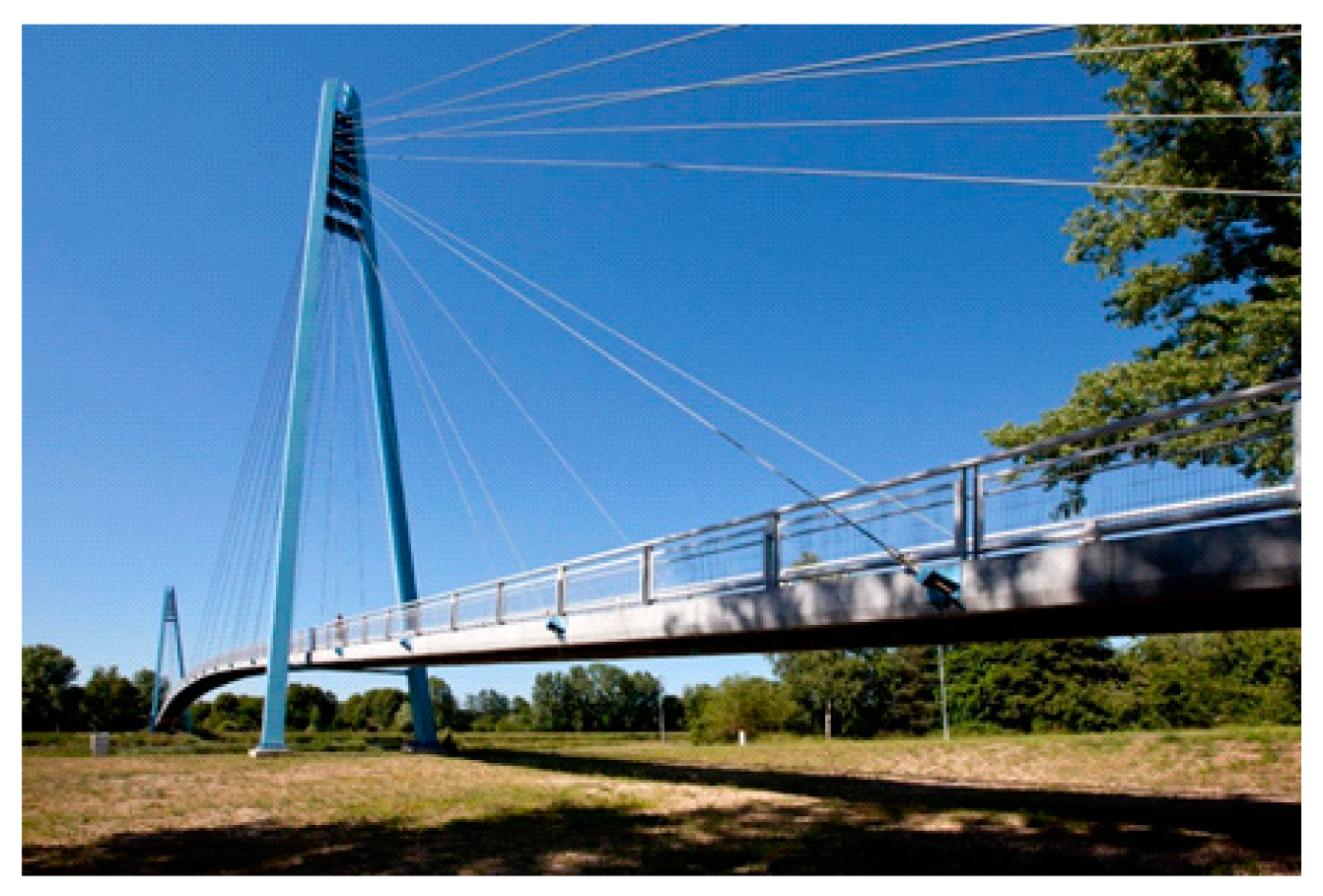

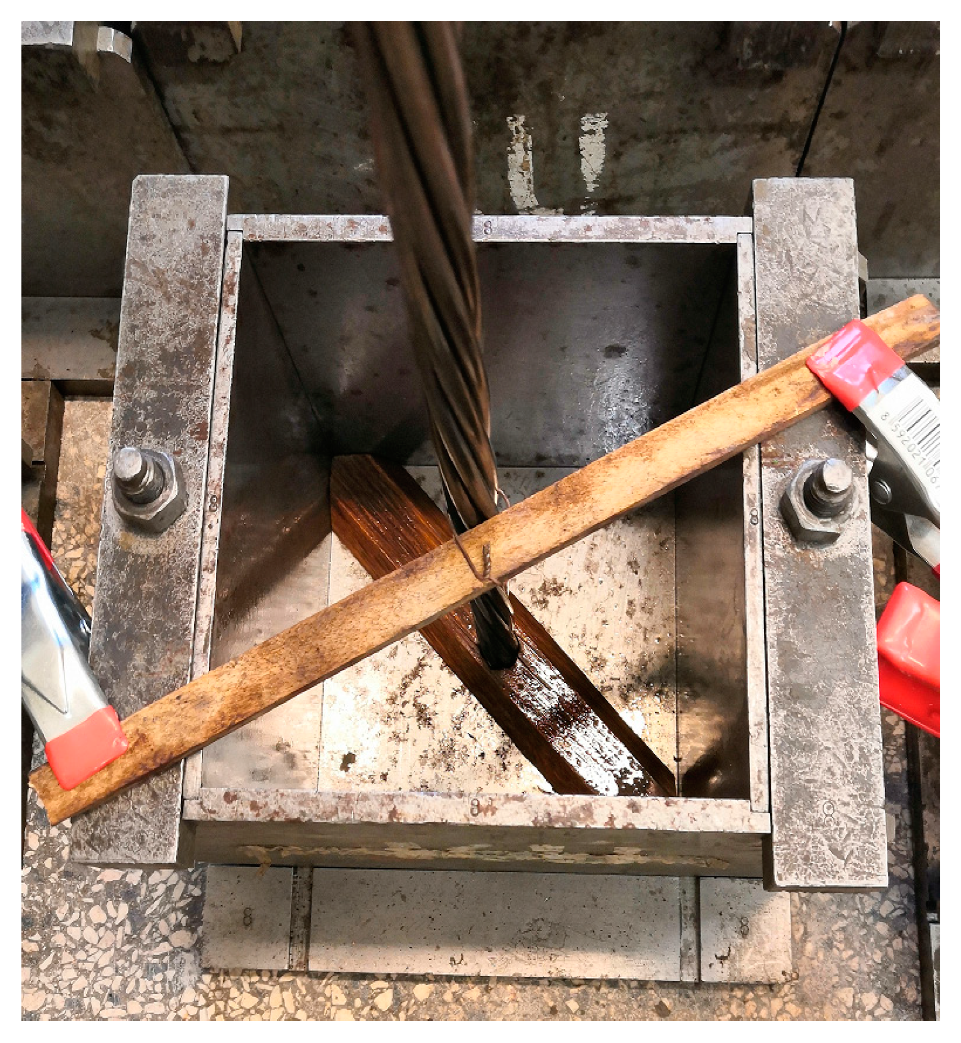

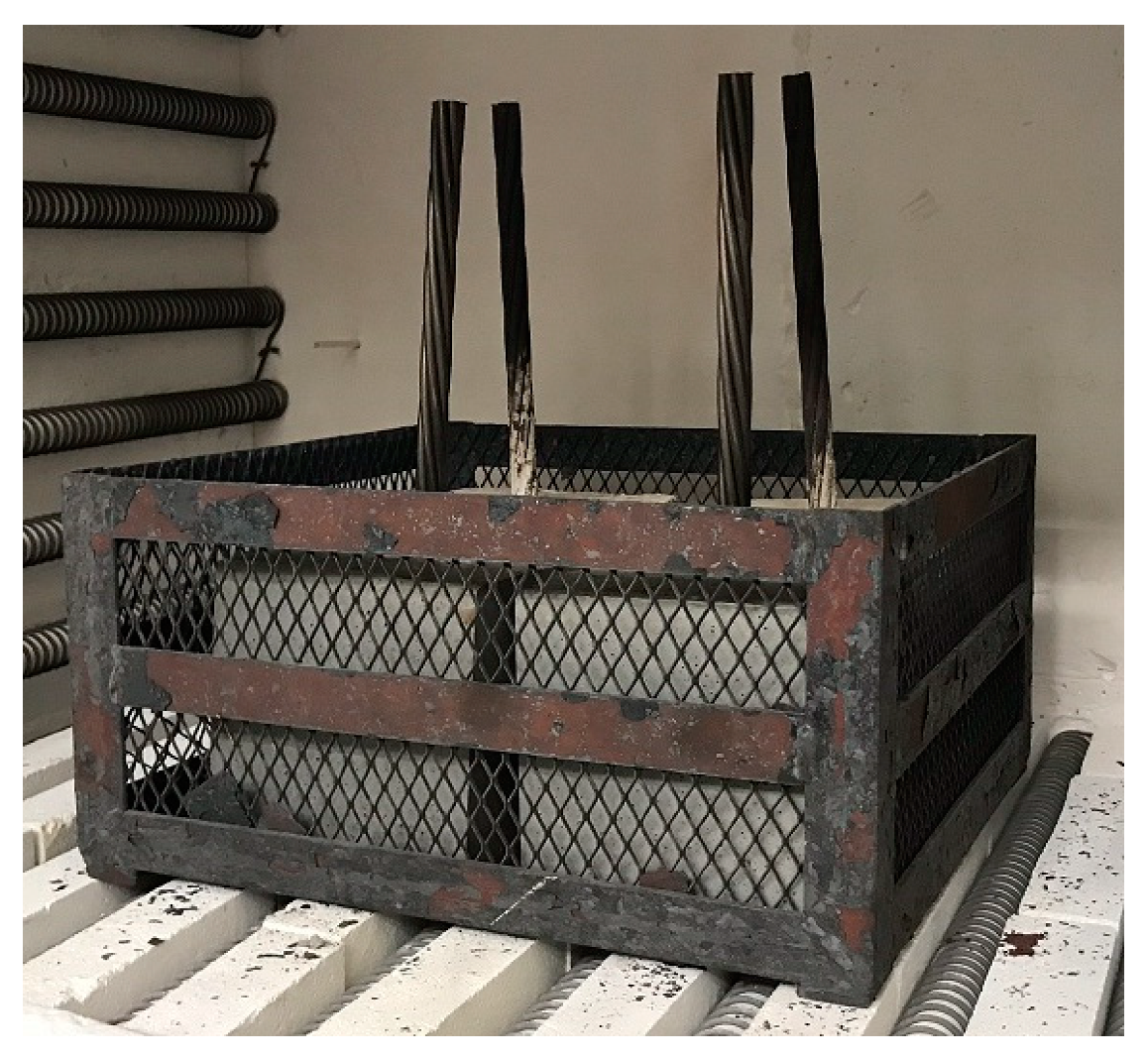
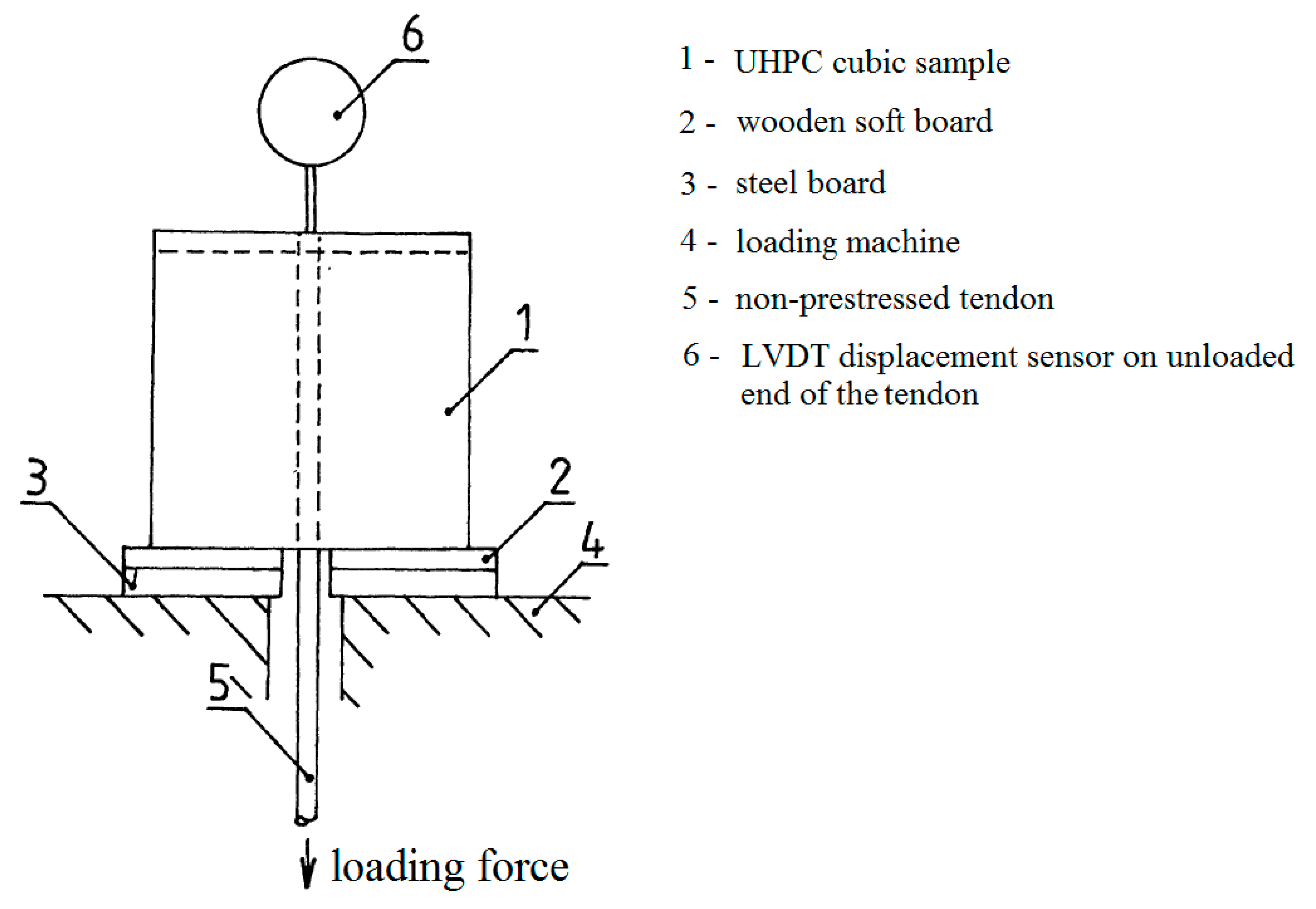
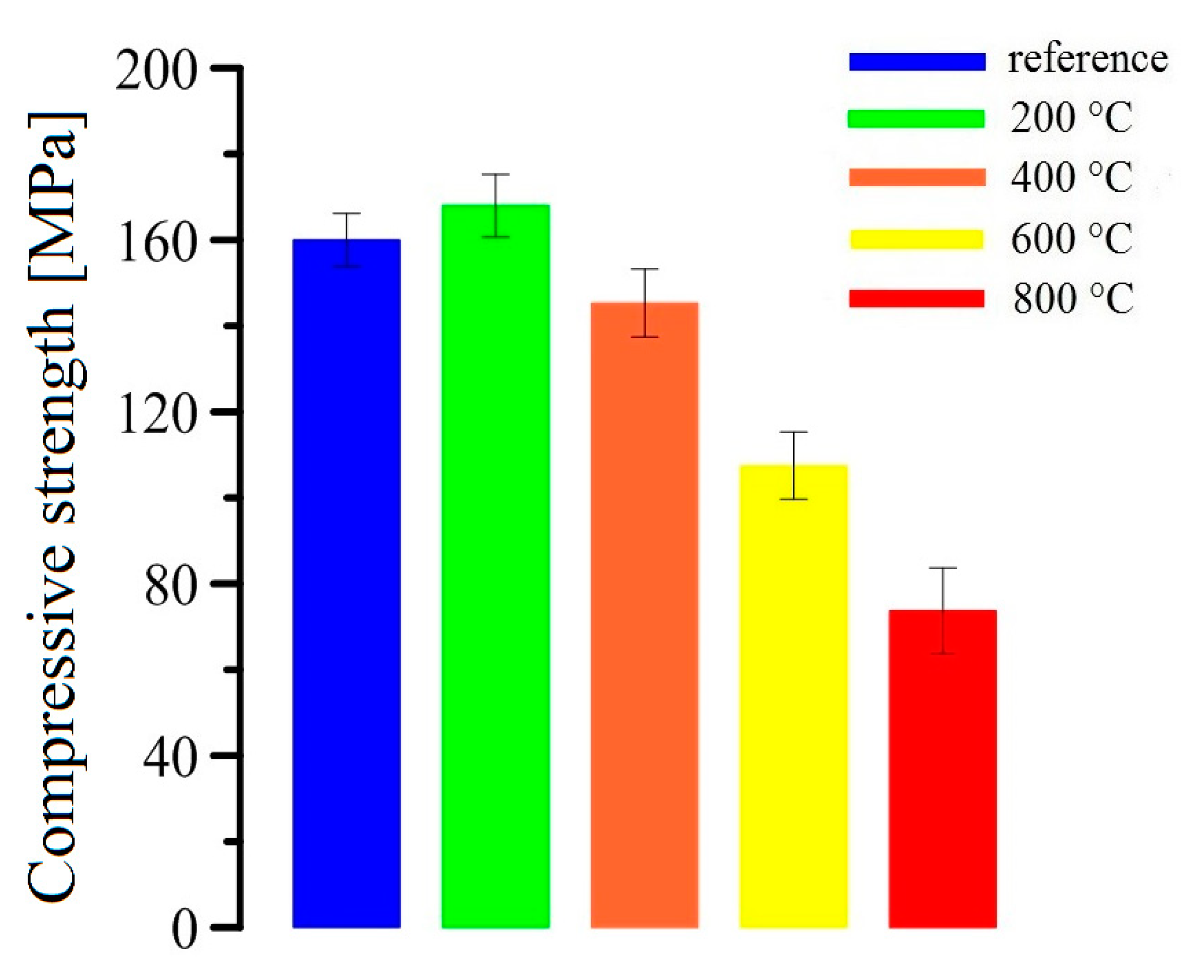

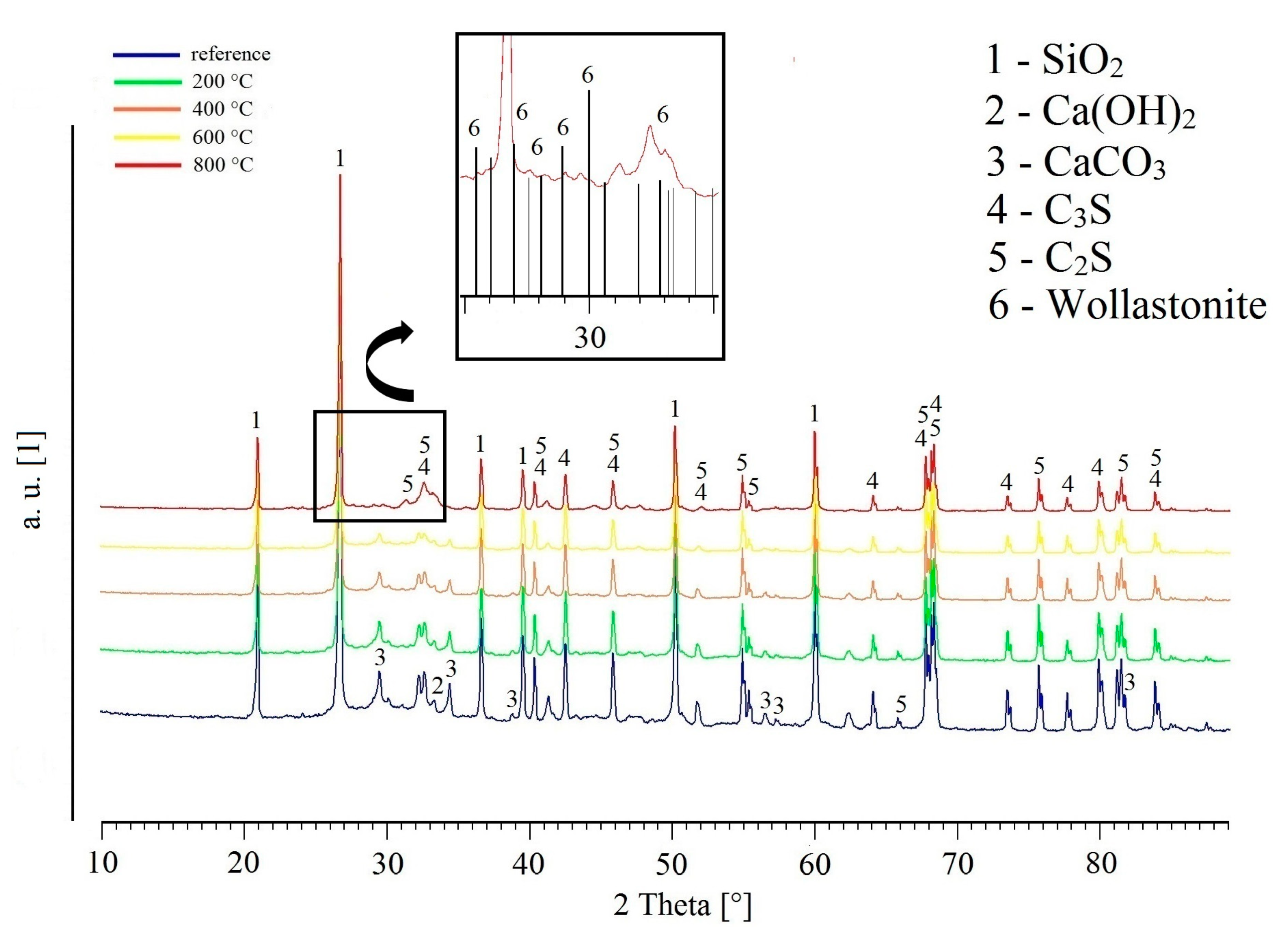

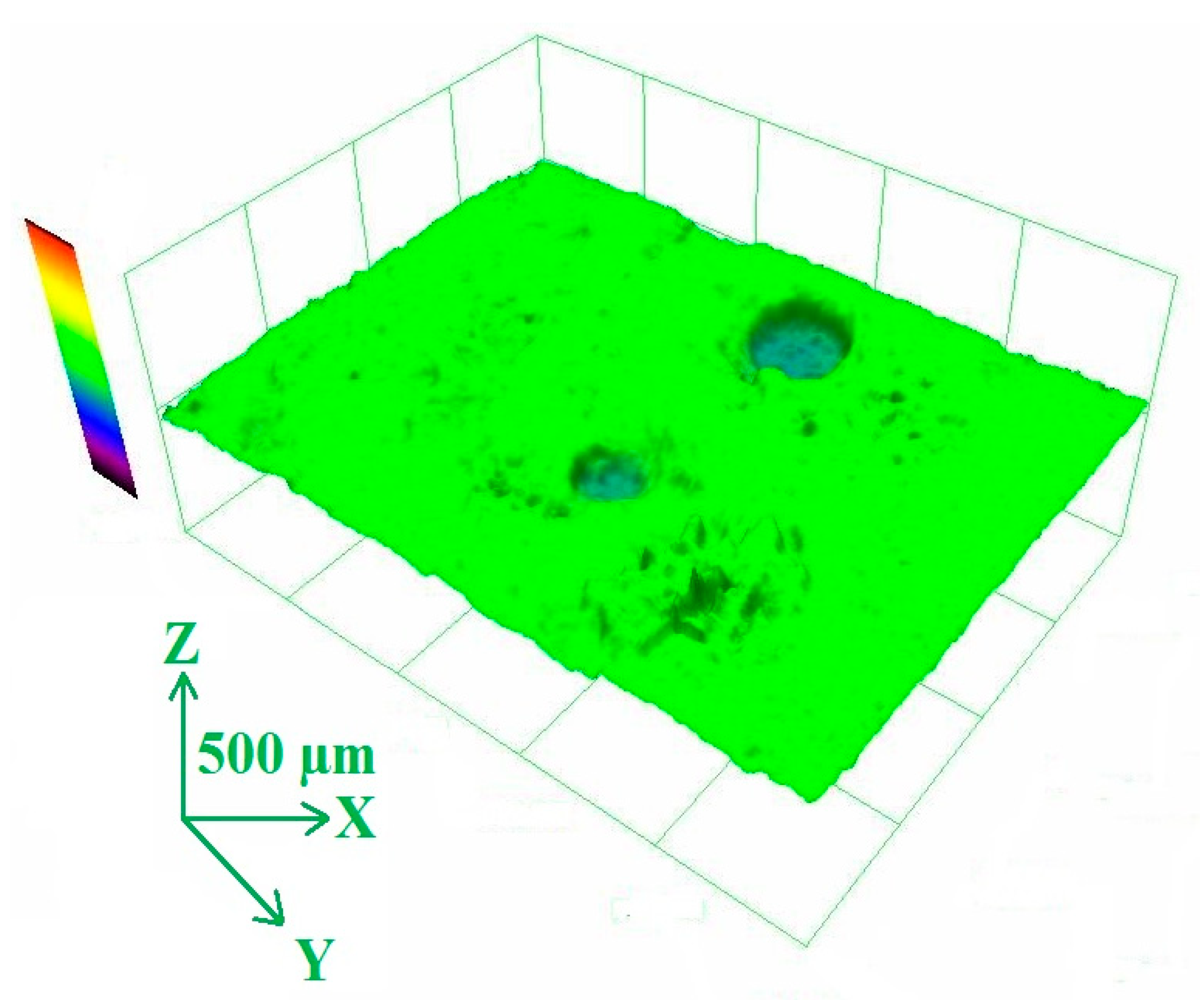
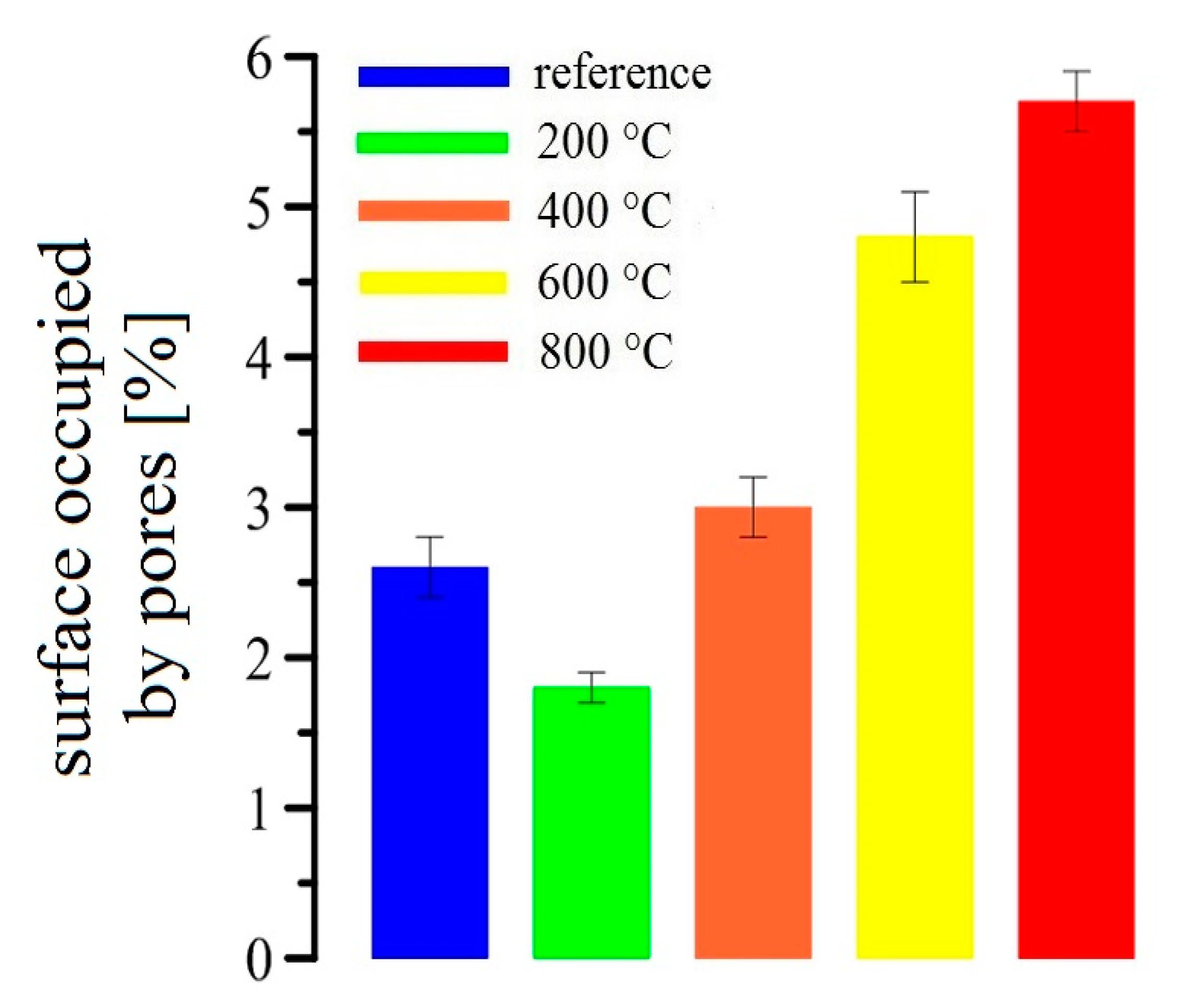
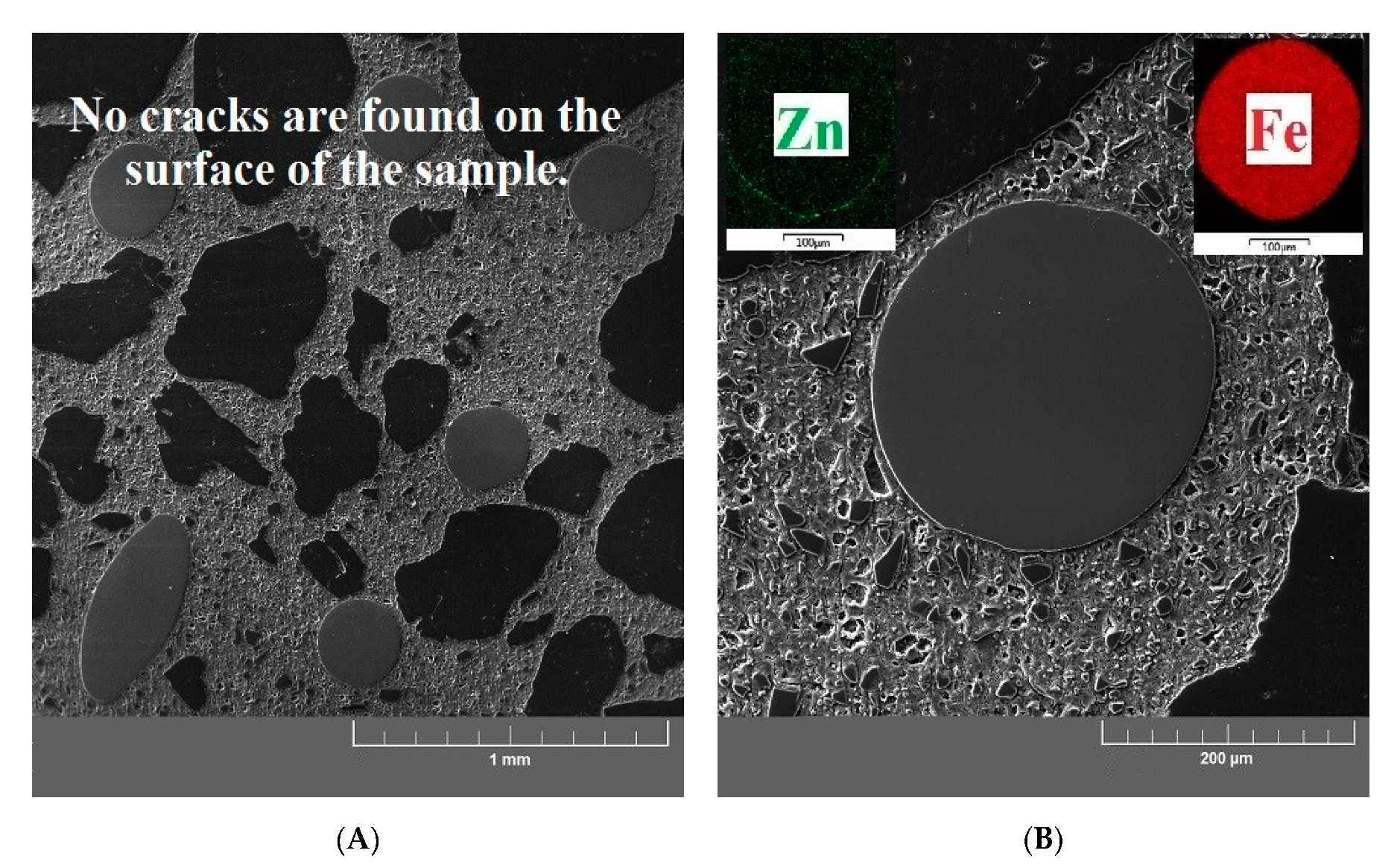

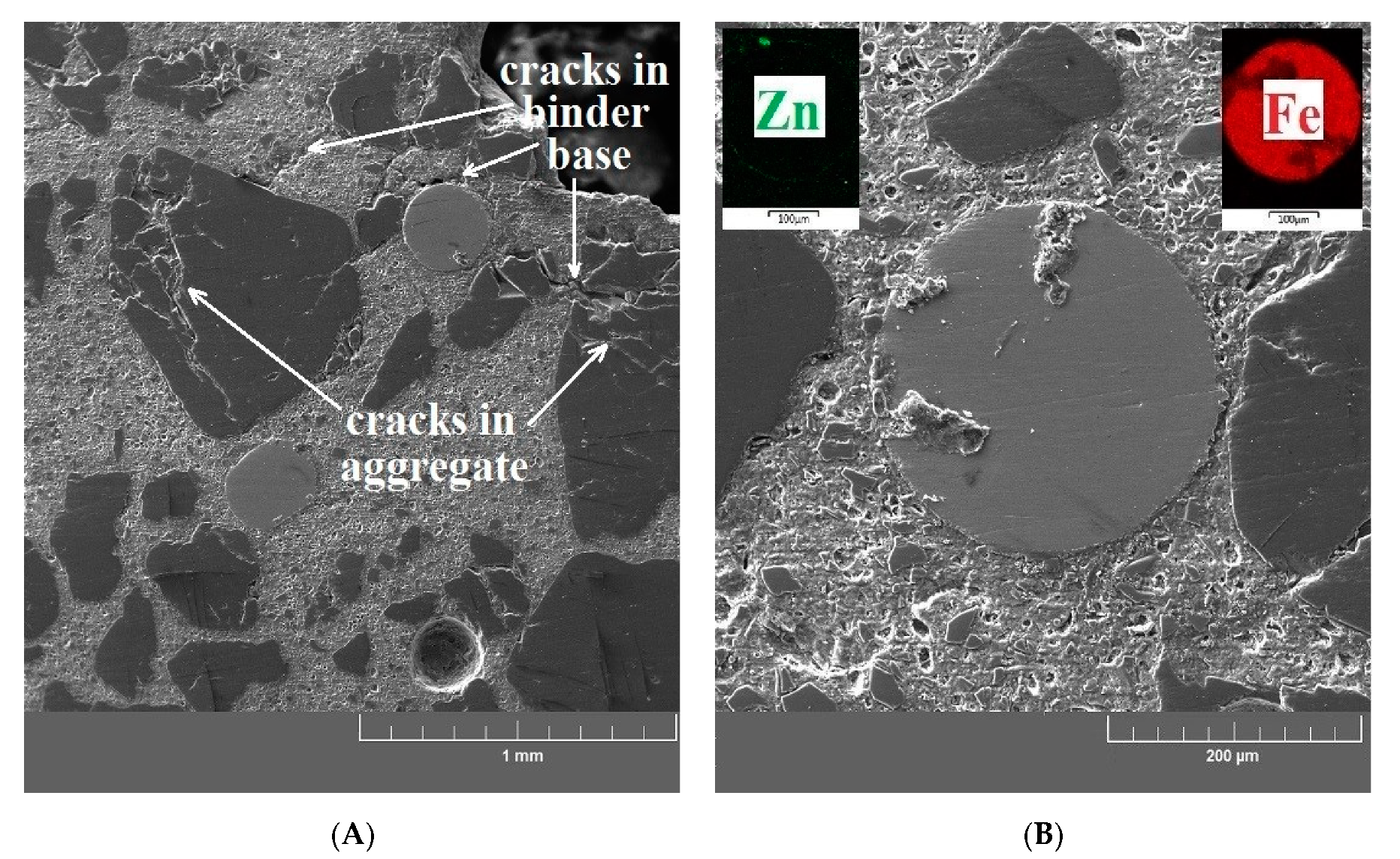
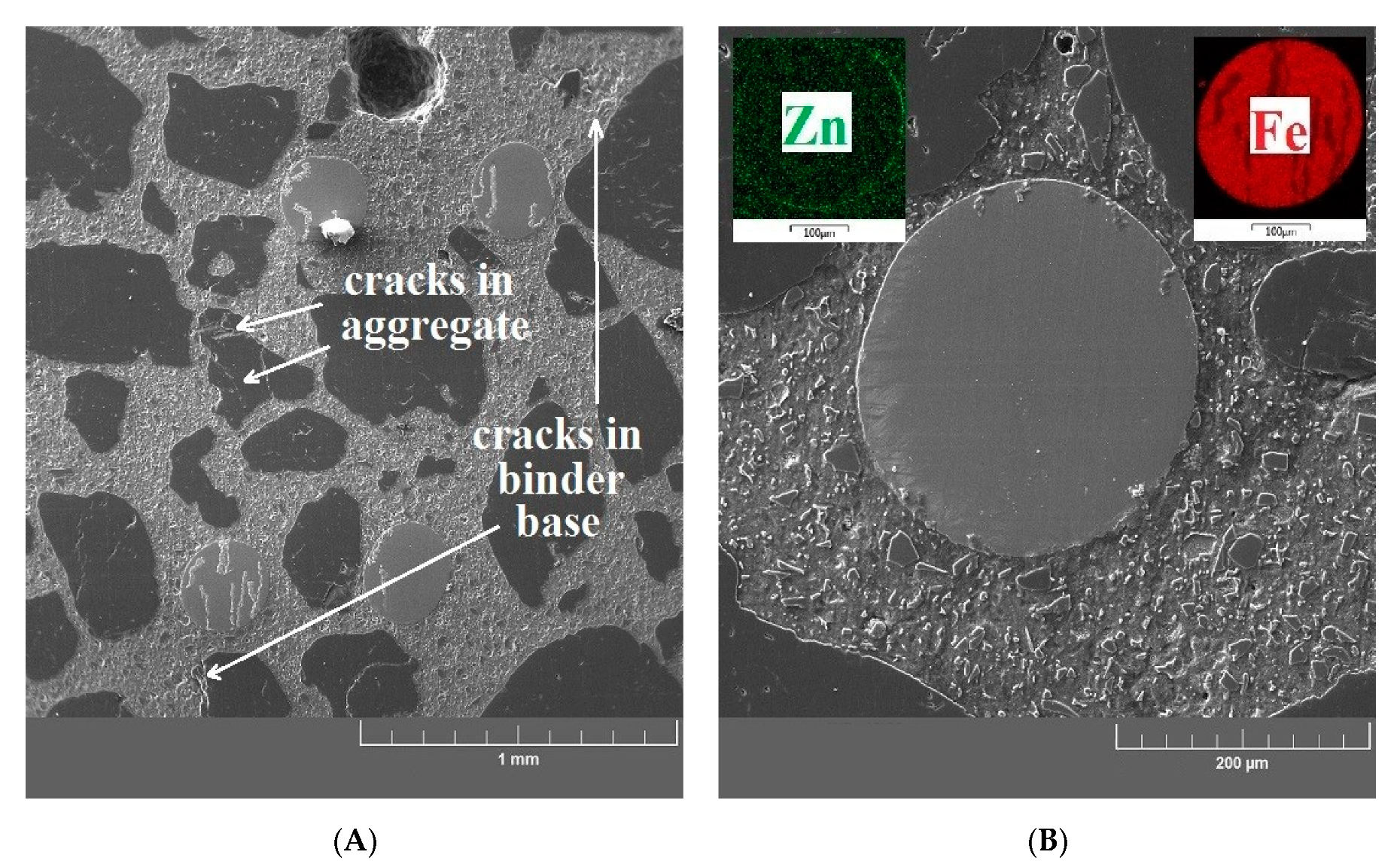
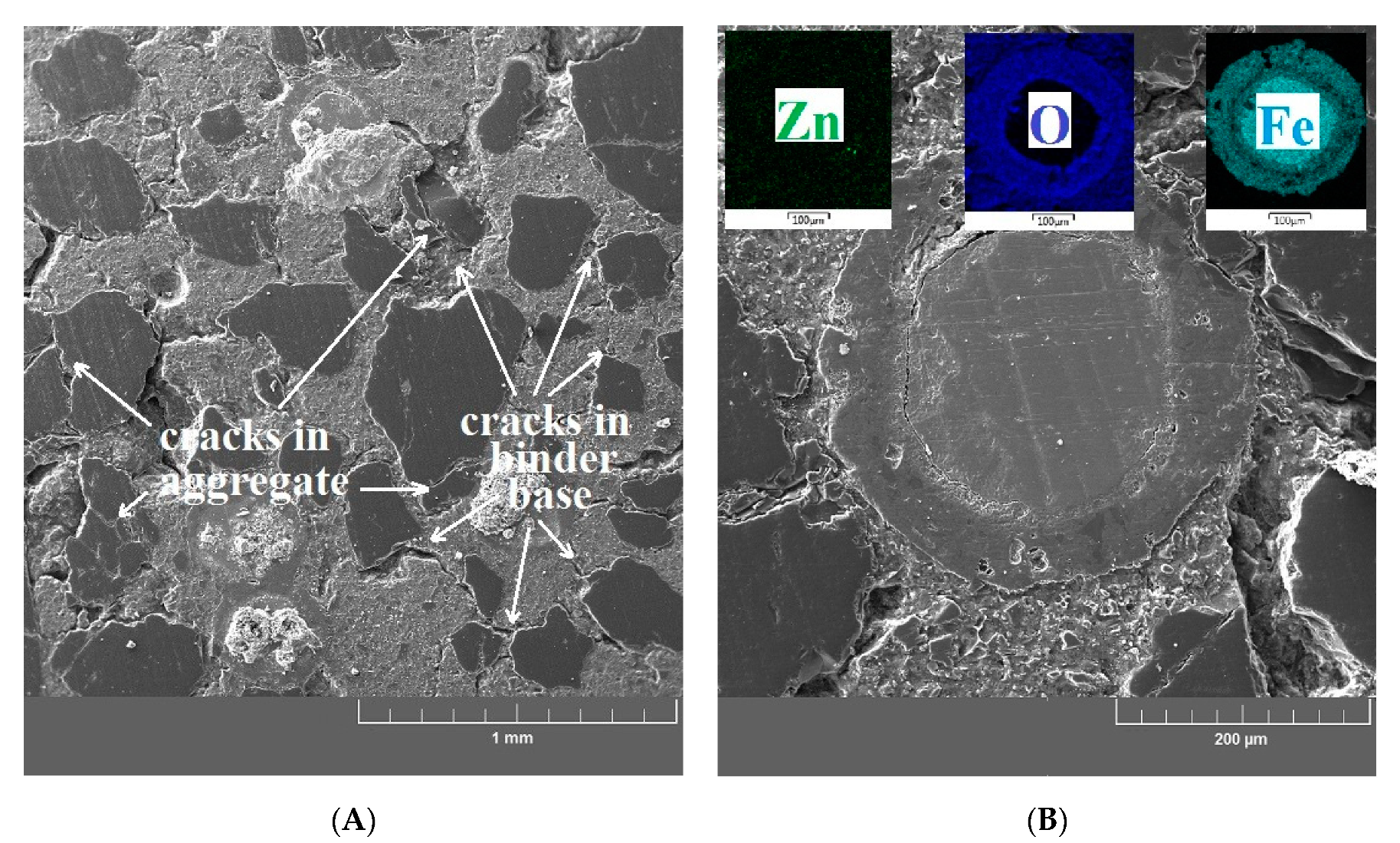
| Compound | CaO | SiO2 | Al2O3 | Fe2O3 | SO3 | MgO | Na2O | K2O |
|---|---|---|---|---|---|---|---|---|
| Content, % | 58.40 | 22.50 | 5.30 | 2.90 | 2.80 | 2.40 | 0.20 | 0.73 |
| Admixture | Content (kg/m3) | Note |
|---|---|---|
| cement (CEM II/A-S 52.5 N) | 700 | cement composition—see Table 1 |
| quartz sand | 1275 | maximal grain size guaranteed to 2 mm |
| silica fume | 100 | - |
| furnace slag | 80 | - |
| plasticizer (PCE HRWRA) | 40 | polycarboxylate base |
| brass coated steel fibres | 120 | 1.5 vol.%; aspect ratio: 62.5 |
| mixture (w/c) | 0.25 | |
| Property | Value and Unit |
|---|---|
| Ultimate tensile strength | 1860 MPa |
| Nominal diameter | 15.7 mm |
| Nominal density | ~1172 g/m |
| Yield strength (0.1%) | 246 kN |
| Young modulus | ~195 GPa |
| Maximum elongation | 3.5% |
Publisher’s Note: MDPI stays neutral with regard to jurisdictional claims in published maps and institutional affiliations. |
© 2020 by the authors. Licensee MDPI, Basel, Switzerland. This article is an open access article distributed under the terms and conditions of the Creative Commons Attribution (CC BY) license (http://creativecommons.org/licenses/by/4.0/).
Share and Cite
Pokorný, P.; Kolísko, J.; Čítek, D.; Kostelecká, M. Effect of Elevated Temperature on the Bond Strength of Prestressing Reinforcement in UHPC. Materials 2020, 13, 4990. https://doi.org/10.3390/ma13214990
Pokorný P, Kolísko J, Čítek D, Kostelecká M. Effect of Elevated Temperature on the Bond Strength of Prestressing Reinforcement in UHPC. Materials. 2020; 13(21):4990. https://doi.org/10.3390/ma13214990
Chicago/Turabian StylePokorný, Petr, Jiří Kolísko, David Čítek, and Michaela Kostelecká. 2020. "Effect of Elevated Temperature on the Bond Strength of Prestressing Reinforcement in UHPC" Materials 13, no. 21: 4990. https://doi.org/10.3390/ma13214990
APA StylePokorný, P., Kolísko, J., Čítek, D., & Kostelecká, M. (2020). Effect of Elevated Temperature on the Bond Strength of Prestressing Reinforcement in UHPC. Materials, 13(21), 4990. https://doi.org/10.3390/ma13214990



